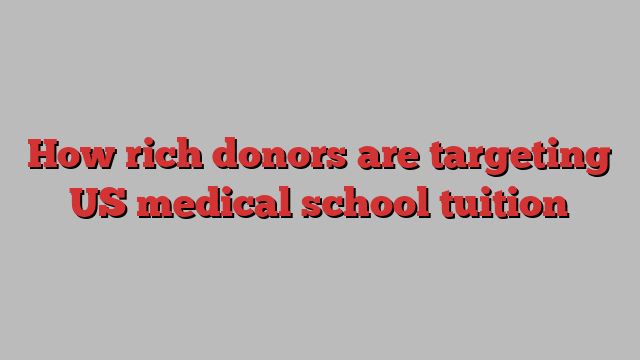
The dean of Johns Hopkins University School of Medicine says he had an “oh my goodness moment” this month when Michael Bloomberg finalised a $1bn donation to provide free tuition to trainee doctors at that school.
“After my own experience going through medical school and managing 13 different loans, I see [the value of] having students who won’t be burdened with debt and will have the opportunity to open their eyes to career choices,” Theodore DeWeese told the Financial Times.
The donation highlighted an intensifying focus by philanthropists on fostering social mobility and seeking to improve healthcare in the US. It also renewed a debate over the barriers to recruiting, training and encouraging a more diverse and qualified group of doctors to work in the areas of greatest need.
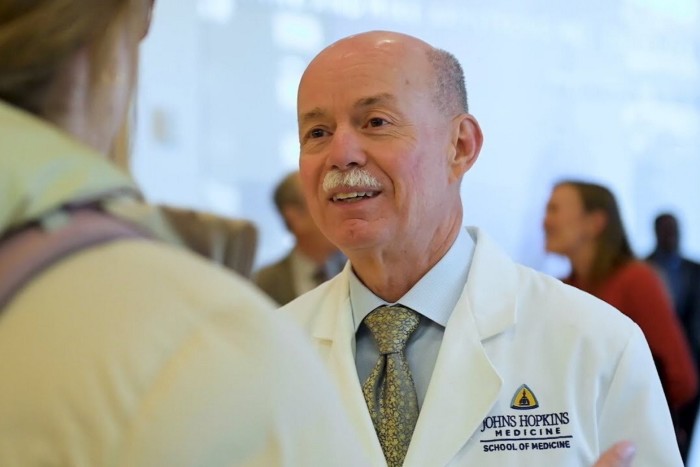
Earlier this year, Ruth Gottesman gave $1bn to provide free tuition to students at Albert Einstein College of Medicine, where she is an emeritus professor. Last year, Roy Vagelos, the former head of Merck and chair of Regeneron, gave $175mn to Columbia to support postgraduate medical scientists, on top of $250mn in 2017 to enable pioneering free medical tuition to its student doctors.
In 2023, Kenneth Langone, a founder of Home Depot, gave $200mn to New York University’s Long Island School of Medicine, making it tuition free and adding to a previous $100mn gift allowing NYU’s principal medical school to be tuition free from 2018.
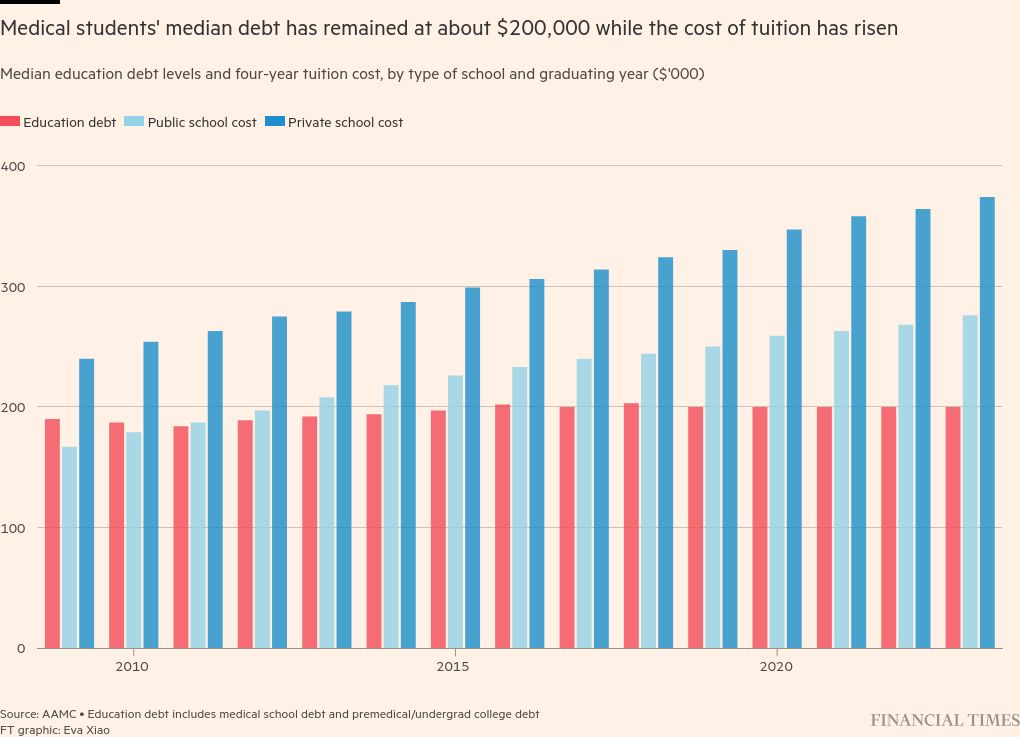
Such philanthropy will be transformational for hundreds of students at the handful of medical institutions able as a result to offer free tuition, which also include the Cleveland Clinic Lerner College of Medicine and the Kaiser Permanente Bernard J Tyson School of Medicine.
The gift from Bloomberg, the billionaire and former New York mayor, “will allow us to enhance the geographical and socio-economic diversity of the students we bring in”, DeWeese said. “There are students who are absolutely brilliant, who should be in medicine in a place like Johns Hopkins, who right now don’t apply because they have been thinking they would come out with several hundred thousands of dollars in debt.”
The gifts come against a backdrop of a sharp rise in tuition fees, which for most medical students require incurring substantial educational debts on top of those already assumed to pay for their four-year undergraduate degree. The average total cost of medical school was now $235,827, according to research by the Association of American Medical Colleges.
Annelise Silva, president of the American Medical Student Association, who specialises in diagnostic radiology, said: “Medical education debt is one of the most significant barriers for students. Tuition has skyrocketed, and there are costs of a hidden curriculum of tutors and test preparation, [medical] board exams and application fees.”
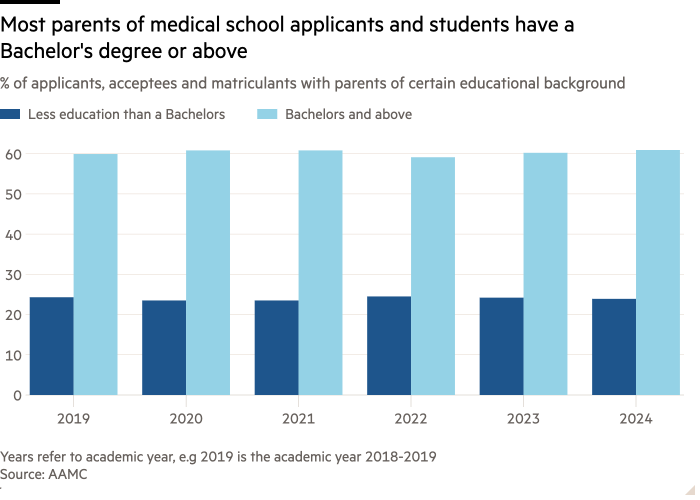
US physicians’ high salaries provide reassurance in theory to prospective medical students that they will be able to pay off high debts from future earnings. But fear of debt dissuades many from poorer backgrounds from applying.
“The difference is if you come from a family where any debt is contagious, there is a psychological threshold and you ask if it’s worth the risk,” said Monica Lypson, vice-dean for medical education at Columbia University. “Students ask why would they take on debt more than their family has ever made in their lifetime.”
She pointed out that trainee doctors are disproportionately drawn from upper middle-income households, which raises concerns about general inequality and creates difficulties for a social mismatch for doctors “if you can’t relate to your patient”.
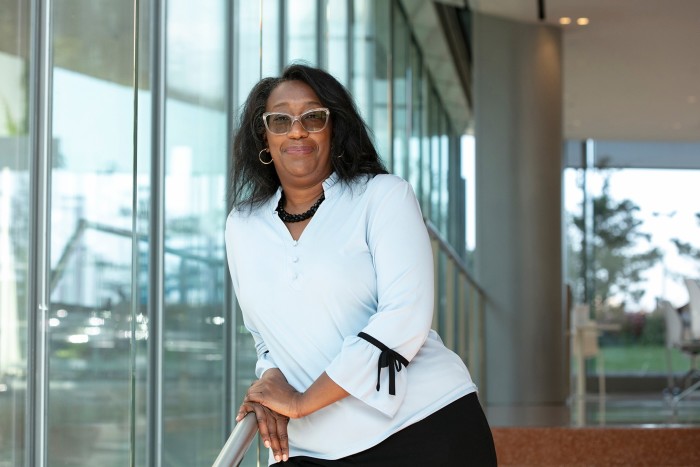
For those who do decide to study medicine, the evidence is mixed over the influence of debt on their career aspirations. But there are concerns that it pushes doctors to specialise in more lucrative fields — such as plastic surgery, dermatology and neurosurgery — at the expense of other lower-paid specialities in high-need areas including primary care, paediatrics, geriatrics, mental health and infectious disease.
Connor Kinslow, who is training in radiation oncology, cautioned that while some tuition-free programmes such as Johns Hopkins and Columbia take into account family income, others do not and risk simply offering additional discounts to richer students.
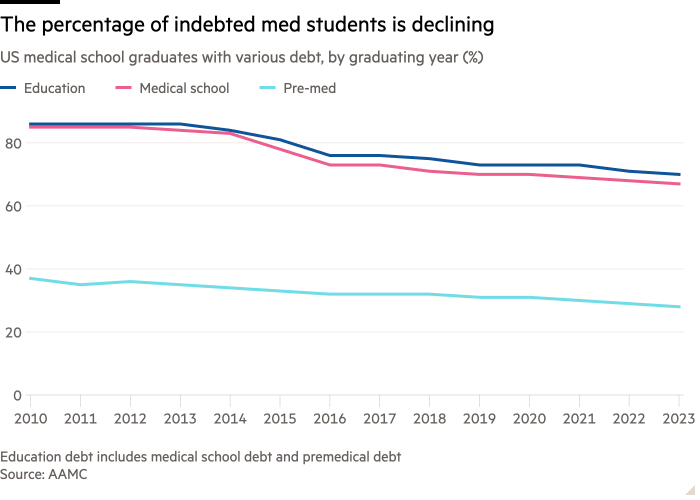
“The likely effect is that these schools will be able to increase their national rankings and student diversity, while there is a ‘zero-sum’ effect on the total demographic,” he said. The handful of elite schools able to offer scholarships to lower-income applicants would attract a more diverse talented pool, he argued, but would do little to improve social mobility for most of those in medical training.
A final concern left unaddressed by philanthropy to reduce medical school debts is whether the high costs of tuition are justified — or whether they simply contribute to broader escalating healthcare costs.
Alison Whelan, chief academic officer at the Association of American Medical Colleges, pointed to the rising costs to justify tuition increases in recent years such as a shift from large lectures to smaller class discussions with faculty, more simulations and a growth in student support services.
“Some things have made medical education substantially more expensive,” she said. “We teach and assess students differently, which has significantly improved how they are learning and being assessed.”
Her organisation’s surveys suggest average college debt has dipped slightly in recent years, which it says could reflect increased financial aid but also fewer poorer students applying and seeking loans at all.